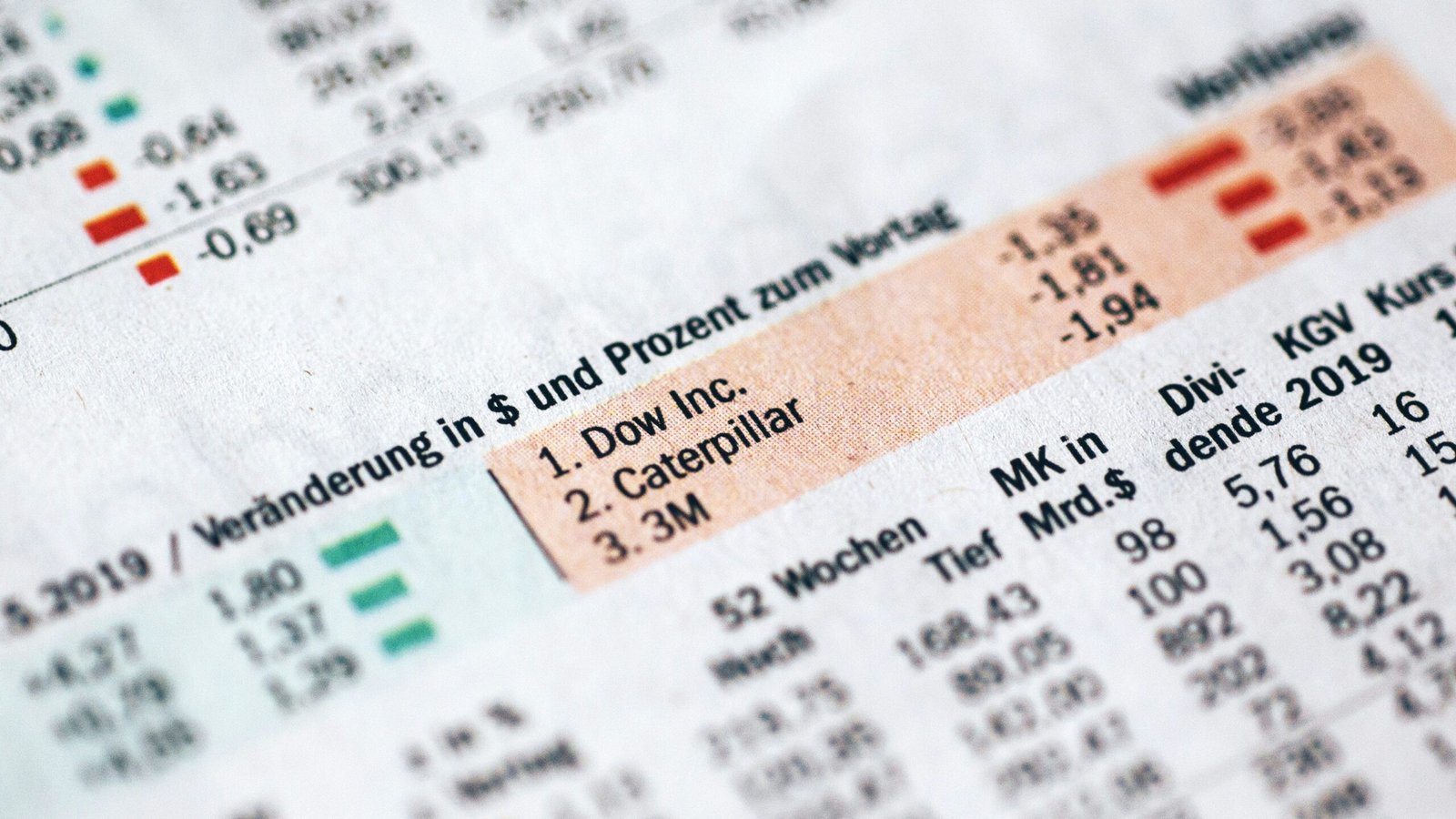Introduction to the Global Materials Industry
The global materials industry serves as a foundation for countless sectors, encompassing a wide array of materials such as metals, plastics, and composites. This industry plays a crucial role in the modern economy, as it supplies the essential raw materials that are integral to the production of goods, infrastructure development, and technological advancements. From the construction of towering skyscrapers to the manufacturing of everyday consumer products, the materials industry is pivotal in supporting and driving economic growth.
Material producers and suppliers play an indispensable role in enhancing the performance and sustainability of various applications. For instance, advanced composites contribute to lighter and stronger structures in the automotive and aerospace sectors, while innovative plastic formulations improve product durability and functionality across a multitude of industries. As global demand for innovative solutions continues to grow, so does the necessity for ongoing research and development within the materials sector.
This blog post aims to explore key trends identified through an extensive survey conducted within the global materials industry. The rationale behind this survey is to gain insights into the current landscape and anticipated future developments. By examining responses from industry professionals, we aim to unveil trends that define the strategic direction of the materials sector. These findings will inform stakeholders about emerging opportunities and challenges, encouraging informed decision-making across various applications.
Understanding the global materials industry not only sheds light on its significance but also emphasizes its interplay with various economic factors. By delving into the survey insights and analyzing recent trends, readers will gain a comprehensive view of the materials landscape, enabling them to navigate the complexities of this vital industry more effectively.
Key Trends Emerging from the Survey
The survey results have illuminated several key trends that are currently shaping the global materials industry. These trends can be categorized into four primary themes: sustainability, technological advancements, supply chain challenges, and shifts in market demand. Each of these themes plays a crucial role in influencing industry practices and strategies.
Sustainability has become a focal point for many organizations within the materials sector. The push toward environmentally friendly materials and manufacturing processes is evident in the growing adoption of sustainable materials. For instance, 68% of survey respondents indicated that they are increasing their investments in recycling technologies and sustainable product development. Circular economy practices, which aim to minimize waste and promote the reuse of materials, are also gaining considerable traction, prompting companies to rethink their product lifecycle management.
Technological advancements, particularly in manufacturing, are reshaping the materials landscape. Innovations such as 3D printing are allowing companies to produce complex structures with reduced waste. As reported by 54% of survey participants, the implementation of additive manufacturing technology not only enhances design flexibility but also lowers production costs. This integration of advanced manufacturing technologies fosters greater efficiency and encourages experimentation in product design, leading to more customized solutions.
However, the materials industry is facing significant supply chain challenges. Ongoing global disruptions, exacerbated by geopolitical tensions and the lingering effects of the COVID-19 pandemic, have led to increased shipping costs and delays. Approximately 73% of respondents noted that navigating these challenges requires adaptability and resilience in their supply chain strategies. Companies are investing in diversifying their supplier base and enhancing digital supply chain management systems to mitigate these issues.
Finally, shifts in market demand are influencing product development and innovation. With consumers increasingly prioritizing sustainable options, businesses must align their offerings to meet these expectations. Industry leaders acknowledge that understanding consumer trends is vital for maintaining competitive advantage and driving growth in this dynamic environment. The convergence of these trends highlights the need for a proactive approach to addressing the evolving landscape of the materials industry.
Future Outlook for the Materials Industry
The future of the materials industry is poised for significant transformation, driven by emerging trends that have been highlighted in recent surveys. As businesses navigate an increasingly complex landscape, they will need to address key growth areas that are likely to shape the market over the coming years. One of the primary drivers of change will be the anticipated shifts in consumer preferences. As the global population becomes more environmentally conscious, demand for sustainable materials and processes is expected to increase, prompting companies to innovate and adapt their offerings accordingly.
Moreover, technological advancements will play a crucial role in shaping the materials industry’s future. The introduction of new materials, such as bio-based and recycled alternatives, will not only meet consumer demand for sustainability but also open avenues for enhanced performance characteristics in various applications. The integration of advanced manufacturing techniques, including 3D printing and automation, promises to improve efficiency and reduce waste, thereby positioning businesses to achieve competitive advantages while addressing environmental concerns.
In addition to technology, regulatory changes will be instrumental in steering the direction of the industry. As governments around the world tighten regulations on sustainability and emissions, businesses are expected to invest more in research and development efforts aimed at compliance and innovation. This increased focus on sustainability will foster collaboration across sectors, as companies seek partnerships that enhance their capabilities and accelerate the development of eco-friendly solutions.
To thrive in this evolving landscape, agility in operations will be essential. Businesses that can swiftly adapt to changes in consumer behavior, regulatory requirements, and technological advancements will be well-positioned to capitalize on emerging opportunities. In conclusion, the future of the materials industry is marked by the interplay of sustainability, innovation, and collaboration, necessitating a proactive approach from all stakeholders involved.
Conclusion and Key Takeaways
The materials industry is experiencing significant transformations, influenced by a variety of trends identified in our survey. As industry stakeholders—including manufacturers, suppliers, and policymakers—navigate this evolving landscape, it is essential to recognize the importance of these trends and adapt accordingly. One of the foremost trends is the growing emphasis on sustainability. Companies that prioritize eco-friendly practices are not only meeting regulatory requirements but are also catering to a more environmentally conscious consumer base, thereby improving their brand reputation and competitiveness.
Innovation stands as a crucial strategy for staying relevant within the industry. The survey highlights advancements in materials science and the adoption of cutting-edge technologies as fundamental drivers of growth. Implementing automation and artificial intelligence in production processes can enhance efficiency, reduce operational costs, and improve product quality. By staying attuned to technological developments, businesses can streamline operations and better meet the evolving demands of the market.
Moreover, collaboration across the supply chain emerges as a pivotal element. Engaging with partners and stakeholders can foster knowledge sharing and drive collective progress in developing sustainable practices and innovative solutions. Industry players are encouraged to actively seek partnerships that enhance their capabilities and expand their networks. This collaborative approach not only strengthens individual organizations but also contributes to the overall health of the materials industry.
In conclusion, the survey findings underscore the necessity for industry players to prioritize sustainability, innovation, and collaboration to thrive amid the key trends shaping the global materials industry. By adopting actionable strategies based on these insights, organizations can navigate challenges effectively and capitalize on opportunities while fostering a responsive and resilient marketplace. Further discussions on these trends will be vital as industry stakeholders work together to address the implications and enhance overall performance in the materials sector.









